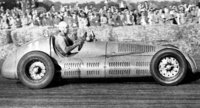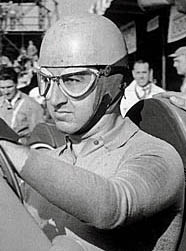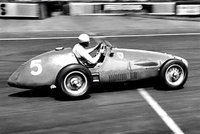Difference between revisions of "Alberto Ascari"
m |
m |
||
| Line 57: | Line 57: | ||
| − | {| border=1 cellspacing=3 cellpadding=4 style="float:right; margin:0 0 .5em 1em; width: | + | {| border=1 cellspacing=3 cellpadding=4 style="float:right; margin:0 0 .5em 1em; width:280px; background:#505050; border-collapse:collapse; border:1px solid #999; font-size:83%; line-height:1.5; " summary="Infobox Automobile" |
|- style="text-align:center; background:#505050;" | |- style="text-align:center; background:#505050;" | ||
| colspan=2 style="padding:0; background:#808080; color:#fff; border-bottom:1px solid #999;" |<videoflash>DZTJShfvBGw|300|200</videoflash> | | colspan=2 style="padding:0; background:#808080; color:#fff; border-bottom:1px solid #999;" |<videoflash>DZTJShfvBGw|300|200</videoflash> | ||
Revision as of 12:05, 11 May 2010
| Alberto Ascari | |
|---|---|
| Nationality: | |
| Years: | 1950 - 1955 |
| Team(s): | Ferrari, Maserati, Lancia |
| Races: | 33 |
| Championships: | 2 |
| Wins: | 13 |
| Podiums: | 17 |
| Poles: | 14 |
| Points | 107.64 (140.14) |
| Fastest laps: | 12 |
| First race: | 1950 Monaco Grand Prix |
| First win: | 1951 German Grand Prix |
| Last win: | 1953 Swiss Grand Prix |
| Last race: | 1955 Monaco Grand Prix |
Alberto Ascari (July 13, 1918 – May 26, 1955) was an Italian racing driver and twice Formula One World Champion. He is one of only two Italian Formula One World Champions in the history of the sport.
Early life
Born in Milan, Ascari was the son of Antonio Ascari, a talented Grand Prix motor racing star in the 1920s, racing Alfa Romeos. Antonio was killed while leading the French Grand Prix in 1925 but the younger Ascari had an interest in racing in spite of it. He raced motorcycles in his earlier years; it was after he entered the prestigious Mille Miglia in a Ferrari sports car that he eventually started racing on four wheels regularly.
Formula One/World Championship career

Following the end of World War II Alberto Ascari began racing in Grands Prix with Maserati. His team-mate was Luigi Villoresi, who would become a mentor and friend to Ascari. Formula One regulations were introduced by the FIA in 1946, with the aim of eventually replacing the pre-war Grand Prix structure. During the next four transitional years, Ascari was at the top of his game, winning numerous events around Europe. He won his first Grand Prix race in Sanremo, Italy in 1948 and took second place in the British Grand Prix the same year. Ascari won another race with the team the following year. His biggest success came after he joined Villoresi on the Ferrari team; he won three more races that year with them. The first Formula One World Championship season took place in 1950, and the Ferrari team made its World Championship debut at Monte Carlo with Ascari, Villoresi, and the popular French driver Raymond Sommer on the team. Ascari finished 2nd in the race and later in the year shared a 2nd place at the first World Championship race at Monza. He was only 5th in the championship standings however. He won his first World Championship F1 race the following season on the Nürburgring circuit and added a win at Monza, finishing runner up in the championship to Juan Manuel Fangio.
With success in Europe, Enzo Ferrari supplied a car for Ascari in the Indianapolis 500, at the time a World Championship event, in 1952. He was the only European driver to race at Indy in its 11 years on the World Championship schedule, but his day ended after 40 laps. That was the only World Championship event in which he competed that season that he didn't win. Ascari's Ferrari Tipo 500 dominated 1952, winning all six races in Europe that season and recording the fastest lap in each race. He nearly scored the maximum amount of points a driver could earn, but drivers were given points for fastest laps at the time, and he had to share a half point with another driver in one race.
He won three more consecutive races to start the 1953 season, giving him nine straight wins (not counting Indy) before his streak ended when he finished 4th in France, although it was a close 4th as the race was highly competitive. He earned two more wins later in the year to give himself a second consecutive World Championship. Ascari did not continue his dominance in 1954 as he failed to finish a race in his four attempts at F1, although he made up for it by winning the Mille Miglia.
| Alberto Ascari in a F1 Ferrari |
|---|
Death
His 1955 season started similarly, retiring twice more, the latter of which was a spectacular incident in Monaco where he crashed into the harbour after missing a chicane. Four days later, on May 26, he went to Monza to watch his friend Eugenio Castellotti test a Ferrari 750 Monza sports car, which they were to co-race in the Supercortemaggiore 1000 km race (having been given special dispensation by Lancia). Just before going home to have lunch with his wife Mietta, he decided to try a few laps with the Ferrari. In shirt sleeves, ordinary trousers and Castellotti’s helmet he set off. As he emerged from a fast curve on the third lap the car unaccountably skidded, turned on its nose and somersaulted twice. Thrown out on the track, Ascari suffered multiple injuries and died a few minutes later.
The crash occurred on the Curva di Vialone, one of the track's challenging high-speed corners. The corner where the accident happened, renamed in his honour, no longer exists, having been replaced with a chicane, the Variante Ascari.
Legend has it that Ascari was a very superstitious man and would always insist on using his distinct pale blue crash helmet. On the day he died, his helmet wasn’t available, so he borrowed Castellotti’s white one. The helmet was at the repair shop, having new chin strap fitted after the incident in Monte Carlo which saw Ascari's Lancia take a dip in the Monaco harbour.
The eerie similarities between the deaths of Alberto and his father still haunt his fans to this day. Alberto Ascari died on May 26, 1955, at the age of 36. Antonio Ascari was also 36 when he died, on July 26, 1925 (Alberto was only 4 days older). Both father and son had won 13 championship Grand Prix and drove car number 26. Both were killed four days after surviving serious accidents and on the 26th day of the month. Both had crashed fatally at the exit of fast but easy left-hand corners and both left behind a wife and two children. Fans from all across the globe mourned as Alberto Ascari was laid to rest next to the grave of his father in the Cimitero Monumentale cemetery in Milan, to be forever remembered as one of the greatest racers of all time.
A distraught Mietta Ascari told Enzo Ferrari that were it not for their children she would gladly have joined her beloved Alberto in heaven.
Legacy
The British manufacturer, Ascari Cars of the Ascari KZ1 supercar is named in his honour.
In 1992, he was inducted into the International Motorsports Hall of Fame.
There is a street in Rome (in the EUR region) named in his honor.
The Ascari Chicane at Autodromo Nazionale Monza is named after him.
Complete World Championship results
(key) (Races in bold indicate pole position; Races in italics indicate fastest lap)
| Year | Entrant | Chassis | Engine | 1 | 2 | 3 | 4 | 5 | 6 | 7 | 8 | 9 | WDC | Points |
|---|---|---|---|---|---|---|---|---|---|---|---|---|---|---|
| 1950 | Scuderia Ferrari | Ferrari 125 | Ferrari V12 | GBR |
MON 2 |
500 |
SUI Ret |
FRA DNS |
5th | 11 | ||||
| Ferrari 125/275 | BEL 5 |
|||||||||||||
| Ferrari 375 | ITA 2 * |
|||||||||||||
| 1951 | Scuderia Ferrari | Ferrari 375 | Ferrari V12 | SUI 6 |
500 |
BEL 2 |
FRA 2 † |
GBR Ret |
GER 1 |
ITA 1 |
ESP 4 |
2nd | 25 (28) | |
| 1952 | Scuderia Ferrari | Ferrari 375 | Ferrari V12 | 500 Ret |
1st | 36 (53.5) | ||||||||
| Ferrari 500 | Ferrari Straight-4 | SUI |
BEL 1 |
FRA 1 |
GBR 1 |
GER 1 |
NED 1 |
ITA 1 |
||||||
| 1953 | Scuderia Ferrari | Ferrari 500 | Ferrari Straight-4 | ARG 1 |
500 |
NED 1 |
BEL 1 |
FRA 4 |
GBR 1 |
GER 8 ‡ |
SUI 1 |
ITA Ret |
1st | 34.5 (46.5) |
| 1954 | Officine Alfieri Maserati | Maserati 250F | Maserati Straight-6 | ARG |
500 |
BEL |
FRA Ret |
GBR Ret |
GER |
SUI |
25th | 1.14 | ||
| Scuderia Ferrari | Ferrari 625 | Ferrari Straight-4 | ITA Ret |
|||||||||||
| Scuderia Lancia | Lancia D50 | Lancia V8 | ESP Ret | |||||||||||
| 1955 | Scuderia Lancia | Lancia D50 | Lancia V8 | ARG Ret |
MON Ret |
500 |
BEL |
NED |
GBR |
ITA |
NC | 0 |
- * Indicates shared drive with Dorino Serafini
- † Indicates shared drive with José Froilán González
- ‡ Indicates shared drive with Luigi Villoresi
World Championship Records
- During the 1952 and 1953 World Championship seasons, Ascari set 7 fastest laps in succession, an achievement that has not been matched to date. The driver to have come closest is Kimi Räikkönen with 6 (in 2008).
- During the 1952 and 1953 World Championship seasons, Ascari won 9 World Championship Grands Prix in succession. Note that to arrive at the statistic of 9 successive races requires the exclusion of the 1953 Indianapolis 500. This caveat is usually permitted on the basis that the Indianapolis 500, whilst a round of the World Championship, was run to a different formula from the other World Championship events, and very few of the regular World Championship teams and drivers competed at Indianapolis and vice versa (Ascari's participation in the 1952 Indianapolis race being one of the few exceptions).
Indy 500 results
|
|
|||||||||||||||||||||||||||||||||||||||||
- Ascari was the only regular F1 driver to participate in the Indianapolis 500 while the race was part of the FIA World Championship (1950-1960).
References
External links
- Grand Prix History - Hall of Fame, Alberto Ascari
- Alberto Ascari statistics
- Alberto Ascari on Find-A-Grave
- [1] Speed circuit in Ronda (Spain)

